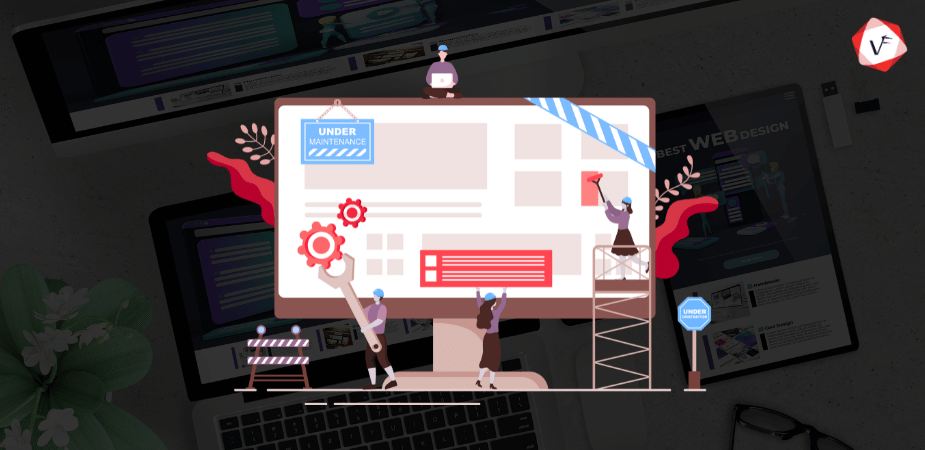Why Consider IBM i Application Modernization?
In the evolving landscape of technology, businesses constantly face the challenge of keeping their applications relevant, efficient, and secure. For organizations relying on the IBM i platform, embracing application modernization is a strategic imperative. This guide explores the significance of application modernization and, specifically, why considering IBM i application modernization is crucial for staying competitive and future-ready.
What is Application Modernization?
Application modernization involves updating and adapting existing software applications to align them with current business needs, technological advancements, and user expectations. Modernizing applications ensures they remain effective, efficient, and capable of leveraging the latest technologies and features to enhance business processes.
Modernization can take various forms, including:
Re-platforming: Moving the application to a more modern infrastructure while maintaining its existing code and functionality.
Refactoring: Restructuring and optimizing the codebase without changing its external behavior to improve performance, scalability, or maintainability.
Re-architecting: Redesigning the application’s architecture to improve its capabilities, scalability, and performance.
Re-hosting: Moving the application to a different hosting environment, like cloud hosting, to improve its flexibility, scalability, and cost-efficiency.
Why Consider IBM i Application Modernization?
The IBM i platform, formerly known as AS/400, has been a stalwart in the business world for decades. However, the rapid evolution of technology demands that organizations using this platform adapt and modernize their applications. Here’s why considering IBM i application modernization is paramount:
1. Enhanced User Experience:
Modernizing applications on the IBM i platform allows for the creation of intuitive, user-friendly interfaces. By revamping the user experience, businesses can boost productivity and satisfaction among employees and customers alike.
Modernization can involve adopting modern UI/UX design principles, implementing responsive design to cater to various devices, and enhancing accessibility to ensure a broader user base.
2. Integration Capabilities:
Modernizing IBM i applications facilitates seamless integration with other systems and applications within the organization. Integration capabilities are essential for enhancing operational efficiency and data flow across the enterprise.
Modernization often involves the use of APIs (Application Programming Interfaces) to enable easy communication and data exchange between different applications and systems.
3. Cost-Efficiency:
While the IBM i platform has a solid foundation, modernizing applications can lead to cost savings in the long run. Streamlining operations, optimizing resources, and ensuring compatibility with newer technologies can reduce operational costs.
Modernization can help in consolidating servers, optimizing licensing costs, and improving resource utilization, resulting in substantial cost savings.
4. Scalability and Flexibility:
Application modernization on IBM i empowers businesses to scale their applications as per evolving business requirements. Whether it’s accommodating increased data loads or adapting to business growth, modernized applications offer the scalability and flexibility needed.
Modernization allows for the adoption of cloud-native principles, making applications more elastic and easily scalable based on demand.
5. Security Enhancements:
Cybersecurity threats are continually evolving. Modernizing applications on IBM i ensures that security measures are up to date, providing a robust defense against potential cyber-attacks and data breaches.
Modernization involves implementing advanced security protocols, encryption, and regular security updates to protect sensitive data and ensure regulatory compliance.
6. Compliance and Regulatory Adherence:
As regulations and compliance standards evolve, modernized applications on IBM i can be updated to meet the latest requirements. This ensures the organization remains compliant with legal and industry-specific regulations.
Modernization often involves incorporating features that help organizations adhere to industry-specific compliance requirements, such as healthcare data privacy (HIPAA) or financial regulations (SOX).
Benefits of Modernizing IBM i
Modernizing IBM i applications offers a multitude of benefits that can positively impact an organization’s operations, efficiency, and bottom line. Here are some key advantages:
a. Improved Performance:
Modernized applications are optimized for performance, resulting in faster response times and efficient data processing. This directly translates to improved productivity and user satisfaction.
Modernization strategies include optimizing database access, improving code efficiency, and leveraging modern hardware capabilities to enhance application performance.
b. Technological Relevance:
Adopting modern technologies, architectures, and frameworks keeps applications relevant and aligned with current industry standards. It positions the organization for future innovations and advancements.
Modernization involves choosing contemporary programming languages, frameworks, and tools that are widely accepted and actively maintained by the developer community.
c. Cost Savings:
Modernized applications are often more efficient, leading to reduced operational costs. Additionally, they enable better resource allocation, saving both time and money.
Cost savings can be achieved through efficient resource utilization, lower maintenance costs, and potential savings in hardware and licensing fees.
d. Competitive Edge:
With a modernized application stack, businesses can respond swiftly to market changes and gain a competitive edge. They can innovate faster and adapt to evolving customer needs and expectations.
Modernization enables the integration of cutting-edge features, enabling businesses to differentiate themselves in the market and meet customer demands more effectively.
Final Thoughts
In the ever-evolving landscape of technology, application modernization is not just an option; it’s a necessity. For businesses relying on the IBM i platform, embracing modernization offers numerous advantages, ranging from enhanced user experience and improved performance to cost savings and a competitive edge.
If you’re considering IBM i application modernization, seize the opportunity to revitalize your applications, streamline processes, and embrace the future of technology. Reach out to our experts at Vofox to embark on a transformative journey towards modernizing your IBM i applications.





